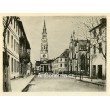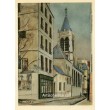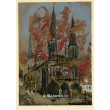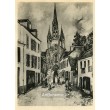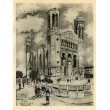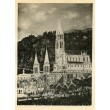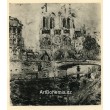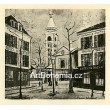Košík
0
x
Produkty
(prázdný)
Žádné díla
Bude determinováno
Dopravné a balné
0 Kč
Celkem
Produkt byl úspěšně přidán do nákupního košíku
Počet
Celkem
0 ks zboží.
1 dílo v košíku.
Za díla:
Doručení a balné:
Bude determinováno
Celkem
Kategorie
- grafiky/tisky
- obrazy
- kresby
- plakáty
- fotografie
- exlibris
- bibliofilie
- knihy/katalogy
- starožitnosti
- sochy/plastiky
- sklo
-
Hnutí
- abstrakce
- art-deco
- čs.avantgarda/moderna
- expresionismus
- fauvismus
- impresionismus
- kubismus
- naivní umění
- op-art
- poetismus
- pop-art
- realismus
- secese
- sociální kritika
- soudobá tvorba
- surrealismus
- světová avantgarda/moderna
- Škola prof. Albína Brunovského
- Škola prof. Zdeňka Sklenáře
- Škola prof.Julia Mařáka - mařákovci
- Žánr
- Zprávy/NEWS
- Doporučujeme
Nová díla
-

Světlo na profil v dlani (Prosby)
1 452 Kč -

Světlo na klečícího (Prosby)
1 452 Kč -

Ryba z akvária (Prosby)
968 Kč
-

Le Torero I (Carnets intimes)
1 355 Kč -60% 3 388 Kč
Hnutí
- abstrakce
- art-deco
- čs.avantgarda/moderna
- expresionismus
- fauvismus
- impresionismus
- kubismus
- naivní umění
- op-art
- poetismus
- pop-art
- realismus
- secese
- sociální kritika
- soudobá tvorba
- surrealismus
- světová avantgarda/moderna
- Škola prof. Albína Brunovského
- Škola prof. Zdeňka Sklenáře
- Škola prof.Julia Mařáka - mařákovci
Žánr
NEJŽÁDANĚJŠÍ UMĚLCI
- Anderle Jiří
- Augustovič Peter
- Benca Igor
- Beneš Karel
- Bím Tomáš
- Born Adolf
- Brun Robert
- Brunovský Albín
- Boštík Václav
- Bouda Cyril
- Bouda Jiří
- Braque Georges
- Brázda Jiří
- Buffet Bernard
- Cézanne Paul
- Čapek Josef
- Čápová Hana
- Dalí Salvador
- Demel Karel
- Dudek Josef
- Dufy Raoul
- Effel Jean
- Felix Karol
- Filla Emil
- Giacometti Alberto
- Grosz George
- Chagall Marc
- Istler Josef
- Janeček Ota
- Jiřincová Ludmila
- Kandinsky Wassily
- Kĺúčik Peter
- Komárek Vladimír
- Kulhánek Oldřich
- Kupka František
- Lada Josef
- Lhoták Kamil
- Matisse Henri
- Miró Joan
- Mucha Alfons
- Muzika František
- Picasso Pablo
- Pileček Jindřich
- Reynek Bohuslav
- Sukdolák Pavel
- Suchánek Vladimír
- Svolinský Karel
- Šíma Josef
- Špála Václav
- Švabinský Max
- Švengsbír Jiří
- Tichý František
- Toulouse-Lautrec Henri de
- Toyen
- Trnka Jiří
- Váchal Josef
- Vik Karel
- Warhol Andy
- Zábranský Vlastimil
- Zoubek Olbram
- Zrzavý Jan
Seznam děl umělce Utrillo Maurice
Maurice Utrillo (1883-1955) was the illegitimate son of Suzanne Valadon, herself a talented painter who was encouraged by Renoir, Degas, and Toulouse-Lautrec, for whom she posed as a model. Utrillo began to drink as a child, was expelled from school, fir
Maurice Utrillo (1883-1955) was the illegitimate son of Suzanne Valadon, herself a talented painter who was encouraged by Renoir, Degas, and Toulouse-Lautrec, for whom she posed as a model. Utrillo began to drink as a child, was expelled from school, fired from jobs, and by the age of eighteen was in a santitorium for alcoholics. During his chaotic adolescence, through his mother's influence, he become interested in painting as a distraction and a form of therapy. Self-trained like his mother, he created images of landscape, towns and people. His art shows nothing of his wild and melodramatic background. His paintings are almost all views of Paris, often painted from picture postcards; they show a sensitive understanding of tone, and are delicate and almost monochromatic in color, with precise drawing and a strange feeling for the atmosphere of a particular street or building. He also become obsessed with street scenes of Montmartre, and painted them over and over again. He repeated these images until his death in 1955.
In: http://www.centaurgalleries.com/Artists/Artist.cfm?ArtistID=00191
Born in Paris on December 26, 1883, Maurice Utrillo was the illegitimate son of Suzanne Valadon, the model and painter. She was only 18 when he was born and even she had very little idea of the father’s identity. It seems that it could have been any one of several artists in Montmartre, though, the strongest evidence seems to point to a young wanderer cum artist named Boissy.
Suzanne adored her son, but in the early years he inconvenienced her lifestyle and so she often neglected young Maurice. For the most part, his maternal grandmother, Madeleine, raised him. She lived with them and took in washing to add to her daughter’s income. At that time, Suzanne was one of the most popular models in Montmartre. Madeleine started giving wine to baby Maurice to put him to sleep, thus forming his future penchant to drink excessively. He was known as a drunk from before the age of thirteen.
Utrillo got his name from Miguel Utrillo, a friend of his mother’s, who agreed to adopt Maurice so that the boy would appear to have a father. Maurice became “Maurice Utrillo” on April 8, 1891. At first, Maurice resented this change terribly and he refused to use the name. Eleven years later when he began to paint, he still signed his name “Maurice Valadon.” Later, he would sign, “M. U. Valadon,” and when he was 27, finally settled on “Maurice Utrillo, V.” Maurice, untrained like his mother, had a raw, natural style. He almost always painted Montmartre and often it was from memory. In this, Suzanne did all she could to encourage him, and he gradually developed his own style.
For most of his life, Maurice would be in and out of hospitals and institutions for drunkenness and mental illness due to drinking. His mother, herself an alcoholic, was a great contributor to the problem. For many years they lived together in Montmartre and in Brittany (where they later had a large country house), the elderly Madeleine, Maurice, Suzanne, and her lover and then husband, André Utter. They drank and fought and scrounged for money, living from the sale of a painting here and there. Utter began to act as agent for both Maurice and Suzanne, and gradually they both became respected artists in Montmartre and with this new found success, life became slightly easier for Suzanne and Utter. Maurice, however, would never lead a stable life. He drank and painted, and when it was very bad would ask his friends to lock him up and not let him drink. He would scream until someone let him out or he could escape.
The finest examples of this are shown throughout his White Period. In his paintings of the White Period, calm and serenity reign, enhanced by the colour white that Utrillo, better than any other painter, could modulate to such poetic effect. During this period, Maurice Utrillo was experiencing one of the happiest times of his life with his marriage to Lucie Valore in 1935 and an established career – he signed his first contract with Paul Pétridès, who was to be his art dealer until the artist’s death in 1955. In: http://www.artnet.com/artist/16981/maurice-utrillo.html
Biography:
Born to unwed mother and painter Suzanne Valadon, Maurice Utrillo was introduced to the artist lifestyle at an early age. He learned his trade from his mother and originally began producing work as therapy while in detoxification clinic. His first exhibit occurred in 1909, where thereafter his Parisian street scenes were grouped with the Impressionists. Despite reoccurring drug and alcohol addictions, Utrillo created a significant amount of work during his career. He became extremely religious in his old age after winning battle against addiction.
In: http://wwar.com/masters/u/utrillo-maurice.html
Perhaps no artist has ever been more associated with their subject matter then Maurice Utrillo and Paris, specifically the legendary artist's quarter of Montmartre. Beginning innocently enough with the Impressionists this Paris neighborhood had developed a reputation as the center of bohemia which later received a more sinister twist from Toulouse-Lautrec, who painted it in the 1890's in its first bloom as both an artist's colony and a gaudy district of nocturnal pleasures. Maurice Utrillo later found infinite inspiration in this same sector painting it as a ruin of its former self filled with nostalgia for a bygone era. He imbued these scenes filled with the decaying walls and facades of the tortuous streets of the "Martyr's Hill" with a melancholy poetry.
Utrillo's famous White Period, between 1909 and 1914, marked his independence from Impressionist influences. His depiction of white buildings in and around Paris employing a palette of essentially varying shades of white tinged with color and rich with surface texture was considered to capture the light in a revolutionary new perspective and won him acclaim from critics and collectors alike. This epoch of Maurice Utrillo's work is considered by many to be the last romantic vestige of Impressionism. The masterpiece La Place des Abbesses sous la neige, c. 1917, featured in this exhibition was painted on the edge of the White Period and sums up the best qualities of Utrillo's paintings. A grand scale depiction of his beloved Paris in a blanket of snow bathed in a wintry light, delighting our eyes, touching our hearts.
Maurice Utrillo's tragic life easily qualified him as a member of the peintres maudits. The neglected, illegitimate son of prostitute turned artist, Suzanne Valadon, Utrillo was an alcoholic in his teens trading paintings for wine, food and shelter. He grew up an outcast living a forlorn existence in the heart of the City of Lights. The wistful pathos conveyed in Utrillo's paintings is easy for the viewer to identify with and embrace. The difficulties of their circumstances did not prevent Maurice Utrillo and his fellow "cursed painters" from making an important and popular contribution to The School of Paris.
In: http://www.weinstein.com/utrillo/about_utrillo.html
Vie de M. Utrillo
PARIS MONTMARTRE
Le mardi 13 octobre 1914
Prologue
Voilà, chers lecteurs, il faut commencer par le commencement. Je suis né à Paris, rue du Poteau (je présume mais ne peux indiquer le numéro), le 25 décembre, jour de Noël (sic) (1) de l'an de grâce 1883. Ma mère une sainte femme que, dans le fond de mon âme, je bénis et vénère à l'égal d'une Déesse, une créature sublime de Bonté, de Droiture, de Charité, d'Abnégation, d'Intelligence, de Courage et de Dévouement, une femme d'Élite, peut-être la plus grande Lumière Picturale du Siècle et du Monde, cette femme noble m'éleva toujours dans les préceptes les plus stricts de la Morale, du Droit et du Devoir.
Hélas ! Que n'ai-je suivi ses sincères conseils et me suis laissé entraîner sur la voie du Vice, insensiblement et par la fréquentation de créatures immondes et lubriques, sirènes gluantes aux yeux qu'embrase la Perfidie et qui, de Moi qui étais un Rosier un peu fané, ont fait un répugnant ivrogne, objet de la Risée et de la Déconsidération publique. Hélas, cent fois hélas !… Que l'auteur de mes jours me pardonne !
Le Chantre de la Butte Montmartre : de 1908 à 1910
Toutes les périodes - période de Montmagny, période blanche, période colorée - sont représentées, ce qui vous permettra d'avoir une vision complète de l'évolution picturale du peintre (de 1908 à 1944).
Savez-vous que la plupart des toiles de cette époque sont à l'étranger, dispersées chez des collectionneurs privés ?
Les tableaux sont tous situés, grâce à de grands panneaux didactiques, dans le contexte d'une vie, d'un homme hors du commun.
On distingue trois périodes dans la vie artistique de Maurice Utrillo :
La première est caractérisée par l'épaisseur de la pâte et la sobriété de la palette.
Musée Maurice Utrillo
Sannois
C'est la période de Montmagny (1904 - 1910). On sent le jeune Utrillo influencé par les impressionnistes mais sachant s'en démarquer la principale différence est que :
« les impressionnistes ont vu les choses par rapport à la lumière qu'ils reçoivent, Utrillo les voit dans leur forme et leur substance » (1)
Oeuvres représentatives
L'église blanche :
La petite communiante ou L'Eglise de Deuil
Quelques cartes postales nous montrent l'église reconstruite après la guerre de 1918. Le cimetière a disparu, le monument a changé, mais quelques éléments architecturaux subsistent.
Seul témoignage de cette tragédie du passé, c'est ce tableau de « la Petite Communiante » exposé de nombreuses fois en France et à l'étranger, qu'Utrillo a peint avec beaucoup d'humilité, un jour d'octobre 1916, derrière les barreaux de sa cellule à l'Hôpital psychiatrique de Villejuif.
Période blanche : 1910 - 1914
Période de Montmagny
Vient ensuite ce qu'il est convenu d'appeler la période « blanche » (1910 - 1914) où le blanc sert de base à sa palette. Il travaille avec une pâte dense et crémeuse dans laquelle il ne craint pas d'intégrer du plâtre, de la chaux et du sable, tant il aime le mur et les effets de matière.
« [Avec] l'audace des simples, il (...) fit dominer le blanc, la couleur qui contient toutes les autres et qui les exalte sans céder à aucune, la plus difficile à manier parce qu'elle est comme une absence ». (*)
Extrait du journal de Maurice Utrillo :
Là-haut, sur les hauteurs de la colline de Sannois, la vue s'étend vaste et profonde dans un cercle visuel d'un rayon d'au moins sept lieues terrestres, mais en reportant ses regards sur le village cité plus haut, on aperçoit une maison quelque peu bourgeoise que nulle enseigne ou plaque de publicité ne dépare.
C'est là que las des humains, de leurs tracasseries et quelque peu fatigué par les abus de l'alcool, réglementaires en ce charmant quartier de Montmartre c'est dans ce séjour hospitalier, calme et silencieux, que je dirigeai mes pas vers le courant de ce printemps fleuri de cette année 1912. Cette maison médicale dirigée par un docteur d'élite excluait toutes maladies mentales (voire fous inguérissables), épileptiques, morphinomanes, furieux et autres infirmités qui déparent par suite des débauches des hommes, la triste humanité. (...)
Il était propriétaire de la clinique de Sannois dans le Val d'Oise ou plusieurs artisetes connus y séjournèrent.
copyright J. Fabris
Musée Maurice Utrillo - Sannois © J. Fabris
C'est l'« Utrillo » de Montmartre qui projette la foule devant sa porte et s'explique. Il vient de faire construire cette maison sur un terrain de l'ancien « maquis », taillis et buissons incultes, misérables cabanes, domaine de clochards, de chiffonniers et d'arsouilles.
En 1910, la percée de l'avenue Junot fit disparaître ce coin de la Butte ainsi que des vestiges gallo-romains et le Moulin de la Poivrière, érigé, sous Louis-Philippe, au Nord de l'actuel Moulin de la Galette. L'avenue passe également sur l'emplacement d'un autre moulin, disparu depuis 1870. Utrillo connaît tous les aspects de ce paysage qu'il a immortalisé dans son tableau.
C'est la période « colorée » qui porte souvent en elle facilité et convention du fait de l'affaiblissement mental du peintre et d'une production par trop intense et répétitive.
D'asiles en maisons de repos, de scandales en vieillesse glorieuse et dorée, Maurice Utrillo a peint plus de 5000 toiles dont la moitié environ peut être considérée comme de véritables chefs-d'œuvre. Plus de trois cents tableaux sont répartis dans les musée du monde entier (dont une centaine en France, une centaine aux États-Unis, une centaine dans le reste de l'Europe).
De la période colorée, nous retiendrons le très beau « Jardin d'Utrillo au Vésinet ».
Bibliographie
Les ouvrages consacrés au peintre
1921 Francis CARCO, Maurice Utrillo, étude critique. Paris : Edition de la Nouvelle Revue Française. 1921.
1924 Gustave COQUIOT. Des peintres maudits : Cézanne, Daumier, Gauguin, Lautrec, Modigliani, Rouault, Seuart, Sisley, Utrillo, Van Gogh. Paris : A. Delpeuch. 1924.
1925 Gustave COQUIOT. Maurice Utrillo. Berlin : E. Wasmuth. 1925.
Gustave COQUIOT. Maurice Utrillo V.. Paris : A. Delpeuch. 1925.
Robert REY. Maurice Utrillo, peintre et lithographe. Paris : Galerie des Peintres Graveurs. Editions Polyglottes. 1925. Adolphe BASLER. Lettre sur Maurice Utrillo. Paris : La Belle Edition. 1925.
1926 Adolphe TABARANT. Utrillo. Paris : Bernheim-Jeune. 1926.
1927 Francis CARCO. La légende et la vie d'Utrillo. Lithographies de l'artiste par Suzanne Valadon. Paris : Seheur. 1927.
Gabriel-Joseph GROS. Maurice Utrillo. 40 gravures. Paris : Éditions G. Crès et Cie. 1927.
André Salmon. Gouaches d'Utrillo, préface d'André Salmon. Paris : Les Quatre Chemins. 1927.
Florent FELS. Maurice Utrillo. Paris : Librairie de France. 1927.
1928 André WARNOD. Gavarni, Toulouse-Lautrec, Utrillo. Paris : La Renaissance du Livre. 1928.
Francis CARCO. La légende et la vie d'Utrillo. Paris : Grasset. 1928.
1929 Georges CHARENSOL. Maurice Utrillo. Paris : Chroniques du Jour. 1929.
1930 Florent FELS. Maurice Utrillo. Paris : Dreut. 1930.
Shigeo MIYATA. Utrillo. Tokio : Atelier Sha. 1930.
1931 Adolphe BASLER. Maurice Utrillo. Paris : Crès. 1931.
1933 Adolphe BASLER. Maurice Utrillo. Paris : Crès. 1933.
1944 Maximilien GAUTHIER. Utrillo. Paris : Editions du Chêne. 1944.
Rodolfo PALLUCCHINI. Maurice Utrillo. Milan : Ulrico Hoepli Editore. 1944.
In: http://www.utrillo.com/pageLibre0001010c.html#I0000412e
Maurice Utrillo was born in Paris, the son of painter Suzanne Valadon. Adopted by a friend of his mother’s who gave him her family name, Utrillo had a difficult childhood, often sick and always lonely.
The young man turned to alcohol at an early age; trying to save her son, Utrillo’s mother got him interested in painting.
His creation would be the result of a vagabond’s life and he often had to commit himself to a health institute to recover from some illness. In 1916, he even got committed to an insane asylum.
One of Montmartre’s outstanding figureheads, Utrillo met with almost instant success. The painter seemed to have many benefactors. From Francis Carco, who published “The Legend and Life of Utrillo”, to Derain who declared with little restraint: “his canvas displays miracles. He could have been a Vermeer or a new Rousseau…but he is just Utrillo…and that’s enough!”
His life’s work deals with urban landscapes, observed with simple imagination, investigating the more humble quarters. Walls, facades, closed windows, street corners and concrete landscapes void of grass, lamp posts closing in on you; rare and far-off figures striving for peaceful skies: so many images of the work of this artist who received the Legion of Honor from the hands of President Edouard Herriot.
These are the clichés offered by Utrillo: urban banality from the past with a distinct flare and style all his own.
Sought after by art lovers everywhere.
http://www.operagallery.com/artist/UTRILLO_447;0;0.aspx
Zobrazit
In: http://www.centaurgalleries.com/Artists/Artist.cfm?ArtistID=00191
Born in Paris on December 26, 1883, Maurice Utrillo was the illegitimate son of Suzanne Valadon, the model and painter. She was only 18 when he was born and even she had very little idea of the father’s identity. It seems that it could have been any one of several artists in Montmartre, though, the strongest evidence seems to point to a young wanderer cum artist named Boissy.
Suzanne adored her son, but in the early years he inconvenienced her lifestyle and so she often neglected young Maurice. For the most part, his maternal grandmother, Madeleine, raised him. She lived with them and took in washing to add to her daughter’s income. At that time, Suzanne was one of the most popular models in Montmartre. Madeleine started giving wine to baby Maurice to put him to sleep, thus forming his future penchant to drink excessively. He was known as a drunk from before the age of thirteen.
Utrillo got his name from Miguel Utrillo, a friend of his mother’s, who agreed to adopt Maurice so that the boy would appear to have a father. Maurice became “Maurice Utrillo” on April 8, 1891. At first, Maurice resented this change terribly and he refused to use the name. Eleven years later when he began to paint, he still signed his name “Maurice Valadon.” Later, he would sign, “M. U. Valadon,” and when he was 27, finally settled on “Maurice Utrillo, V.” Maurice, untrained like his mother, had a raw, natural style. He almost always painted Montmartre and often it was from memory. In this, Suzanne did all she could to encourage him, and he gradually developed his own style.
For most of his life, Maurice would be in and out of hospitals and institutions for drunkenness and mental illness due to drinking. His mother, herself an alcoholic, was a great contributor to the problem. For many years they lived together in Montmartre and in Brittany (where they later had a large country house), the elderly Madeleine, Maurice, Suzanne, and her lover and then husband, André Utter. They drank and fought and scrounged for money, living from the sale of a painting here and there. Utter began to act as agent for both Maurice and Suzanne, and gradually they both became respected artists in Montmartre and with this new found success, life became slightly easier for Suzanne and Utter. Maurice, however, would never lead a stable life. He drank and painted, and when it was very bad would ask his friends to lock him up and not let him drink. He would scream until someone let him out or he could escape.
The finest examples of this are shown throughout his White Period. In his paintings of the White Period, calm and serenity reign, enhanced by the colour white that Utrillo, better than any other painter, could modulate to such poetic effect. During this period, Maurice Utrillo was experiencing one of the happiest times of his life with his marriage to Lucie Valore in 1935 and an established career – he signed his first contract with Paul Pétridès, who was to be his art dealer until the artist’s death in 1955. In: http://www.artnet.com/artist/16981/maurice-utrillo.html
Biography:
Born to unwed mother and painter Suzanne Valadon, Maurice Utrillo was introduced to the artist lifestyle at an early age. He learned his trade from his mother and originally began producing work as therapy while in detoxification clinic. His first exhibit occurred in 1909, where thereafter his Parisian street scenes were grouped with the Impressionists. Despite reoccurring drug and alcohol addictions, Utrillo created a significant amount of work during his career. He became extremely religious in his old age after winning battle against addiction.
In: http://wwar.com/masters/u/utrillo-maurice.html
Perhaps no artist has ever been more associated with their subject matter then Maurice Utrillo and Paris, specifically the legendary artist's quarter of Montmartre. Beginning innocently enough with the Impressionists this Paris neighborhood had developed a reputation as the center of bohemia which later received a more sinister twist from Toulouse-Lautrec, who painted it in the 1890's in its first bloom as both an artist's colony and a gaudy district of nocturnal pleasures. Maurice Utrillo later found infinite inspiration in this same sector painting it as a ruin of its former self filled with nostalgia for a bygone era. He imbued these scenes filled with the decaying walls and facades of the tortuous streets of the "Martyr's Hill" with a melancholy poetry.
Utrillo's famous White Period, between 1909 and 1914, marked his independence from Impressionist influences. His depiction of white buildings in and around Paris employing a palette of essentially varying shades of white tinged with color and rich with surface texture was considered to capture the light in a revolutionary new perspective and won him acclaim from critics and collectors alike. This epoch of Maurice Utrillo's work is considered by many to be the last romantic vestige of Impressionism. The masterpiece La Place des Abbesses sous la neige, c. 1917, featured in this exhibition was painted on the edge of the White Period and sums up the best qualities of Utrillo's paintings. A grand scale depiction of his beloved Paris in a blanket of snow bathed in a wintry light, delighting our eyes, touching our hearts.
Maurice Utrillo's tragic life easily qualified him as a member of the peintres maudits. The neglected, illegitimate son of prostitute turned artist, Suzanne Valadon, Utrillo was an alcoholic in his teens trading paintings for wine, food and shelter. He grew up an outcast living a forlorn existence in the heart of the City of Lights. The wistful pathos conveyed in Utrillo's paintings is easy for the viewer to identify with and embrace. The difficulties of their circumstances did not prevent Maurice Utrillo and his fellow "cursed painters" from making an important and popular contribution to The School of Paris.
In: http://www.weinstein.com/utrillo/about_utrillo.html
Vie de M. Utrillo
PARIS MONTMARTRE
Le mardi 13 octobre 1914
Prologue
Voilà, chers lecteurs, il faut commencer par le commencement. Je suis né à Paris, rue du Poteau (je présume mais ne peux indiquer le numéro), le 25 décembre, jour de Noël (sic) (1) de l'an de grâce 1883. Ma mère une sainte femme que, dans le fond de mon âme, je bénis et vénère à l'égal d'une Déesse, une créature sublime de Bonté, de Droiture, de Charité, d'Abnégation, d'Intelligence, de Courage et de Dévouement, une femme d'Élite, peut-être la plus grande Lumière Picturale du Siècle et du Monde, cette femme noble m'éleva toujours dans les préceptes les plus stricts de la Morale, du Droit et du Devoir.
Hélas ! Que n'ai-je suivi ses sincères conseils et me suis laissé entraîner sur la voie du Vice, insensiblement et par la fréquentation de créatures immondes et lubriques, sirènes gluantes aux yeux qu'embrase la Perfidie et qui, de Moi qui étais un Rosier un peu fané, ont fait un répugnant ivrogne, objet de la Risée et de la Déconsidération publique. Hélas, cent fois hélas !… Que l'auteur de mes jours me pardonne !
Le Chantre de la Butte Montmartre : de 1908 à 1910
Toutes les périodes - période de Montmagny, période blanche, période colorée - sont représentées, ce qui vous permettra d'avoir une vision complète de l'évolution picturale du peintre (de 1908 à 1944).
Savez-vous que la plupart des toiles de cette époque sont à l'étranger, dispersées chez des collectionneurs privés ?
Les tableaux sont tous situés, grâce à de grands panneaux didactiques, dans le contexte d'une vie, d'un homme hors du commun.
On distingue trois périodes dans la vie artistique de Maurice Utrillo :
La première est caractérisée par l'épaisseur de la pâte et la sobriété de la palette.
Musée Maurice Utrillo
Sannois
C'est la période de Montmagny (1904 - 1910). On sent le jeune Utrillo influencé par les impressionnistes mais sachant s'en démarquer la principale différence est que :
« les impressionnistes ont vu les choses par rapport à la lumière qu'ils reçoivent, Utrillo les voit dans leur forme et leur substance » (1)
Oeuvres représentatives
L'église blanche :
La petite communiante ou L'Eglise de Deuil
Quelques cartes postales nous montrent l'église reconstruite après la guerre de 1918. Le cimetière a disparu, le monument a changé, mais quelques éléments architecturaux subsistent.
Seul témoignage de cette tragédie du passé, c'est ce tableau de « la Petite Communiante » exposé de nombreuses fois en France et à l'étranger, qu'Utrillo a peint avec beaucoup d'humilité, un jour d'octobre 1916, derrière les barreaux de sa cellule à l'Hôpital psychiatrique de Villejuif.
Période blanche : 1910 - 1914
Période de Montmagny
Vient ensuite ce qu'il est convenu d'appeler la période « blanche » (1910 - 1914) où le blanc sert de base à sa palette. Il travaille avec une pâte dense et crémeuse dans laquelle il ne craint pas d'intégrer du plâtre, de la chaux et du sable, tant il aime le mur et les effets de matière.
« [Avec] l'audace des simples, il (...) fit dominer le blanc, la couleur qui contient toutes les autres et qui les exalte sans céder à aucune, la plus difficile à manier parce qu'elle est comme une absence ». (*)
Extrait du journal de Maurice Utrillo :
Là-haut, sur les hauteurs de la colline de Sannois, la vue s'étend vaste et profonde dans un cercle visuel d'un rayon d'au moins sept lieues terrestres, mais en reportant ses regards sur le village cité plus haut, on aperçoit une maison quelque peu bourgeoise que nulle enseigne ou plaque de publicité ne dépare.
C'est là que las des humains, de leurs tracasseries et quelque peu fatigué par les abus de l'alcool, réglementaires en ce charmant quartier de Montmartre c'est dans ce séjour hospitalier, calme et silencieux, que je dirigeai mes pas vers le courant de ce printemps fleuri de cette année 1912. Cette maison médicale dirigée par un docteur d'élite excluait toutes maladies mentales (voire fous inguérissables), épileptiques, morphinomanes, furieux et autres infirmités qui déparent par suite des débauches des hommes, la triste humanité. (...)
Il était propriétaire de la clinique de Sannois dans le Val d'Oise ou plusieurs artisetes connus y séjournèrent.
copyright J. Fabris
Musée Maurice Utrillo - Sannois © J. Fabris
C'est l'« Utrillo » de Montmartre qui projette la foule devant sa porte et s'explique. Il vient de faire construire cette maison sur un terrain de l'ancien « maquis », taillis et buissons incultes, misérables cabanes, domaine de clochards, de chiffonniers et d'arsouilles.
En 1910, la percée de l'avenue Junot fit disparaître ce coin de la Butte ainsi que des vestiges gallo-romains et le Moulin de la Poivrière, érigé, sous Louis-Philippe, au Nord de l'actuel Moulin de la Galette. L'avenue passe également sur l'emplacement d'un autre moulin, disparu depuis 1870. Utrillo connaît tous les aspects de ce paysage qu'il a immortalisé dans son tableau.
C'est la période « colorée » qui porte souvent en elle facilité et convention du fait de l'affaiblissement mental du peintre et d'une production par trop intense et répétitive.
D'asiles en maisons de repos, de scandales en vieillesse glorieuse et dorée, Maurice Utrillo a peint plus de 5000 toiles dont la moitié environ peut être considérée comme de véritables chefs-d'œuvre. Plus de trois cents tableaux sont répartis dans les musée du monde entier (dont une centaine en France, une centaine aux États-Unis, une centaine dans le reste de l'Europe).
De la période colorée, nous retiendrons le très beau « Jardin d'Utrillo au Vésinet ».
Bibliographie
Les ouvrages consacrés au peintre
1921 Francis CARCO, Maurice Utrillo, étude critique. Paris : Edition de la Nouvelle Revue Française. 1921.
1924 Gustave COQUIOT. Des peintres maudits : Cézanne, Daumier, Gauguin, Lautrec, Modigliani, Rouault, Seuart, Sisley, Utrillo, Van Gogh. Paris : A. Delpeuch. 1924.
1925 Gustave COQUIOT. Maurice Utrillo. Berlin : E. Wasmuth. 1925.
Gustave COQUIOT. Maurice Utrillo V.. Paris : A. Delpeuch. 1925.
Robert REY. Maurice Utrillo, peintre et lithographe. Paris : Galerie des Peintres Graveurs. Editions Polyglottes. 1925. Adolphe BASLER. Lettre sur Maurice Utrillo. Paris : La Belle Edition. 1925.
1926 Adolphe TABARANT. Utrillo. Paris : Bernheim-Jeune. 1926.
1927 Francis CARCO. La légende et la vie d'Utrillo. Lithographies de l'artiste par Suzanne Valadon. Paris : Seheur. 1927.
Gabriel-Joseph GROS. Maurice Utrillo. 40 gravures. Paris : Éditions G. Crès et Cie. 1927.
André Salmon. Gouaches d'Utrillo, préface d'André Salmon. Paris : Les Quatre Chemins. 1927.
Florent FELS. Maurice Utrillo. Paris : Librairie de France. 1927.
1928 André WARNOD. Gavarni, Toulouse-Lautrec, Utrillo. Paris : La Renaissance du Livre. 1928.
Francis CARCO. La légende et la vie d'Utrillo. Paris : Grasset. 1928.
1929 Georges CHARENSOL. Maurice Utrillo. Paris : Chroniques du Jour. 1929.
1930 Florent FELS. Maurice Utrillo. Paris : Dreut. 1930.
Shigeo MIYATA. Utrillo. Tokio : Atelier Sha. 1930.
1931 Adolphe BASLER. Maurice Utrillo. Paris : Crès. 1931.
1933 Adolphe BASLER. Maurice Utrillo. Paris : Crès. 1933.
1944 Maximilien GAUTHIER. Utrillo. Paris : Editions du Chêne. 1944.
Rodolfo PALLUCCHINI. Maurice Utrillo. Milan : Ulrico Hoepli Editore. 1944.
In: http://www.utrillo.com/pageLibre0001010c.html#I0000412e
Maurice Utrillo was born in Paris, the son of painter Suzanne Valadon. Adopted by a friend of his mother’s who gave him her family name, Utrillo had a difficult childhood, often sick and always lonely.
The young man turned to alcohol at an early age; trying to save her son, Utrillo’s mother got him interested in painting.
His creation would be the result of a vagabond’s life and he often had to commit himself to a health institute to recover from some illness. In 1916, he even got committed to an insane asylum.
One of Montmartre’s outstanding figureheads, Utrillo met with almost instant success. The painter seemed to have many benefactors. From Francis Carco, who published “The Legend and Life of Utrillo”, to Derain who declared with little restraint: “his canvas displays miracles. He could have been a Vermeer or a new Rousseau…but he is just Utrillo…and that’s enough!”
His life’s work deals with urban landscapes, observed with simple imagination, investigating the more humble quarters. Walls, facades, closed windows, street corners and concrete landscapes void of grass, lamp posts closing in on you; rare and far-off figures striving for peaceful skies: so many images of the work of this artist who received the Legion of Honor from the hands of President Edouard Herriot.
These are the clichés offered by Utrillo: urban banality from the past with a distinct flare and style all his own.
Sought after by art lovers everywhere.
http://www.operagallery.com/artist/UTRILLO_447;0;0.aspx
Fotografie
 |  |  |
